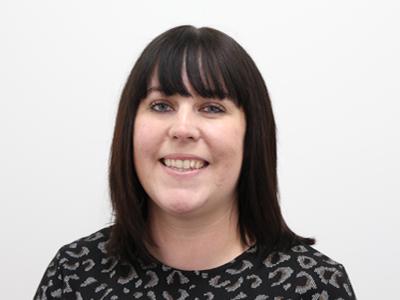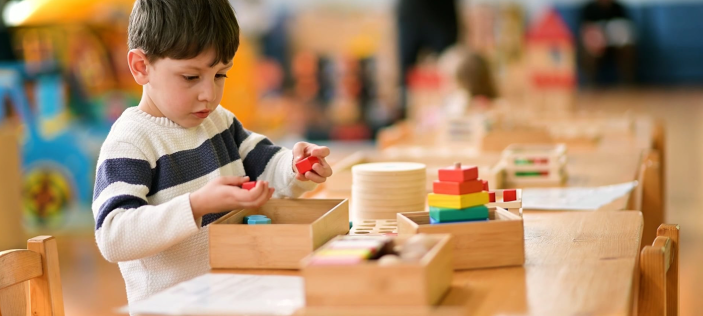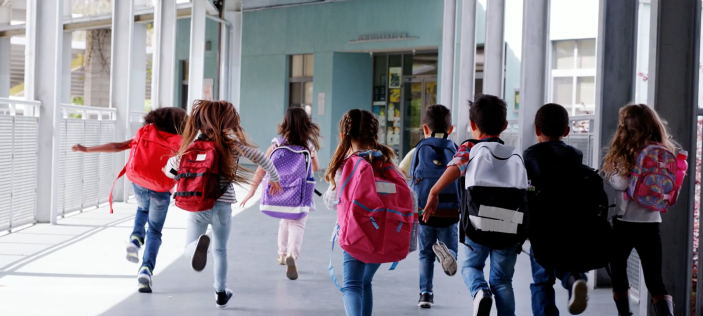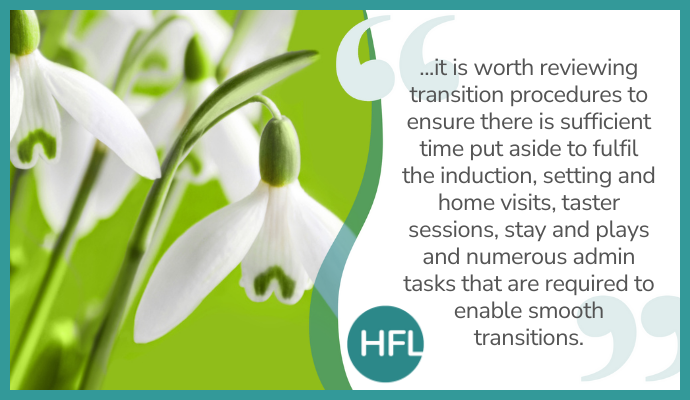
Signs of spring… snowdrops blossoming, evenings becoming lighter and preparation for transition! At this point of the year, allocations for the new starters are now in process and by the time the Easter holidays have ended, parents/carers will be finding out which school their three- and four-year-olds will start in September. That means, early years practitioners will be beginning their juggling act of continuing to provide high quality provision for their current cohorts and be carefully monitoring the children joining them in the autumn term.
At this point, it is worth reviewing transition procedures to ensure there is sufficient time put aside to fulfil the induction, setting and home visits, taster sessions, stay and plays and numerous admin tasks that are required to enable smooth transitions. Where settings have children moving to school, it is beneficial to have conversations with parents/carers about transition and contact schools to exchange valuable information.
“Creating a smooth transition into school is vital to ensuring the child gets the best possible start in their new setting.”
Developing a smooth transition into school, Early Years Careers, 2016.
Here are a few things to consider when reviewing and planning the procedures in place to support smooth transitions for every child.
Top tips to support smooth transitions into school
1) Develop a transition timetable and make the whole school/setting aware of it
Transition procedures need to be robust and everyone involved should have sight over events/activities that are planned. It would be beneficial for early years leaders/managers to compile a list of the procedures involved with transition and plot them against the annual planner for the whole school/setting, such as when visits to feeder settings or stay and play sessions are scheduled. This will ensure that transition is embedded in practice, acknowledged by everyone, and establishes a clear expectation that every child will have a successful start to school.

2) Exchange meaningful information between professionals
Many of the children joining the school will have attended a previous setting or childminder and it is vital that time is set aside share information about the child and family. It is important to remember that some children may have been with the previous provider from as young as three months old and others may have only been with the provider for a term. Conversations between professionals will enable valuable information to be shared which will ensure appropriate provision is put into place to meet the needs of every child.

3) Build relationships with the families
“For Early Years settings, partnerships between parents are every bit as important at the end of their relationship as at the start.”
Hello, Big School – Managing transitions, Melanie Pilcher.
Many will be saying goodbye to early years practitioners that have cared for their child for a significant amount of time and they need to establish a trusting relationship with the next professional. Regardless of home background or circumstances, positive relationships must be formed. Parents/carers can be just as, if not even more, anxious about their child(ren) starting school, and as you will be aware, parents/carers are their child’s first and most important teacher. They will be able to provide you with a wealth of information about their child(ren). In some cases, children may have only been cared for at home, therefore gathering this information is even more pertinent. It can be very daunting for parents/carers to welcome teachers/practitioners into their homes. View home visits as a privilege that many are not privy to.
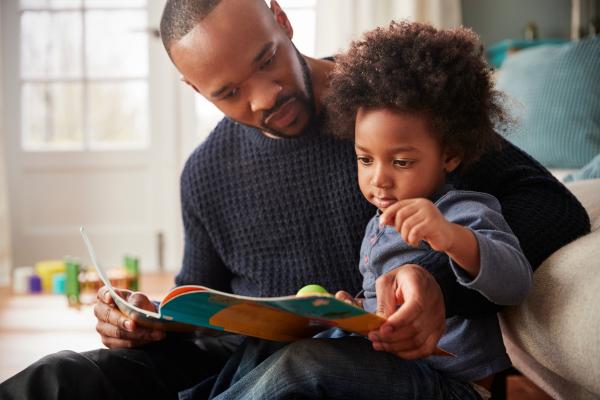
4) Plan and organise the learning environment to meet the needs of all children
The information gathered from conversations between professionals, parents/carers and children should be used to inform planning and organisation of the learning environment for the when the children start. Ensure that children’s interests and needs are catered for by reviewing the provision and making enhancements that will make children feel welcome.
‘When small changes are supported by responsive, knowledgeable adults, children will gradually discover that their world is a safe and predictable place’
Seamless Transitions – supporting continuity in young children’s learning, DfE.
5) Be prepared for anything
Even with all the careful planning and preparation that are put in place, situations will always arise that were never expected. This would be great time to reflect on the procedures that have been put in place for supporting smooth transitions and to identify any developments that could be made. There will always be surprises and bumps along the way, unknown children will appear and staffing may well change but if effective transition procedures in place these can be referred to whenever required.
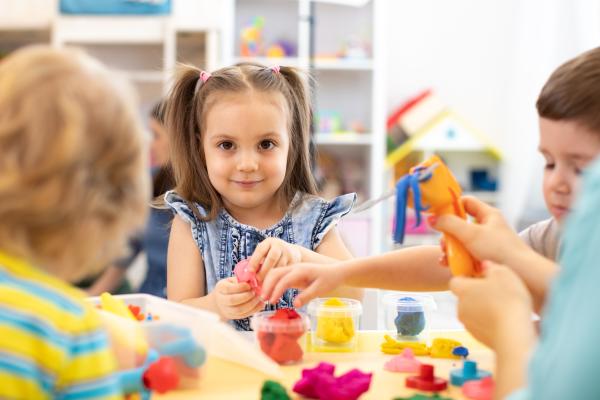
“A successful transition means children settle quickly into school, learning and developing from day one.”
Transition to Reception, Anna Ephgrave, Teach Early Years.
The key thing to remember with transition is that it is not an event, it is ongoing and will require personalisation for individual needs to be met effectively which will allow children, and adults, to settle into their new surroundings and routines. Information gathered prior to children starting will provide an insight into where adaptation may be required and will enable schools to be fully prepared for their new starters.
To ensure a smooth transition is facilitated, the Transition Level of Need Tool (TLoNT) has been used successfully through Hertfordshire and continues to support practitioners and teachers to meet the needs of new cohorts.
